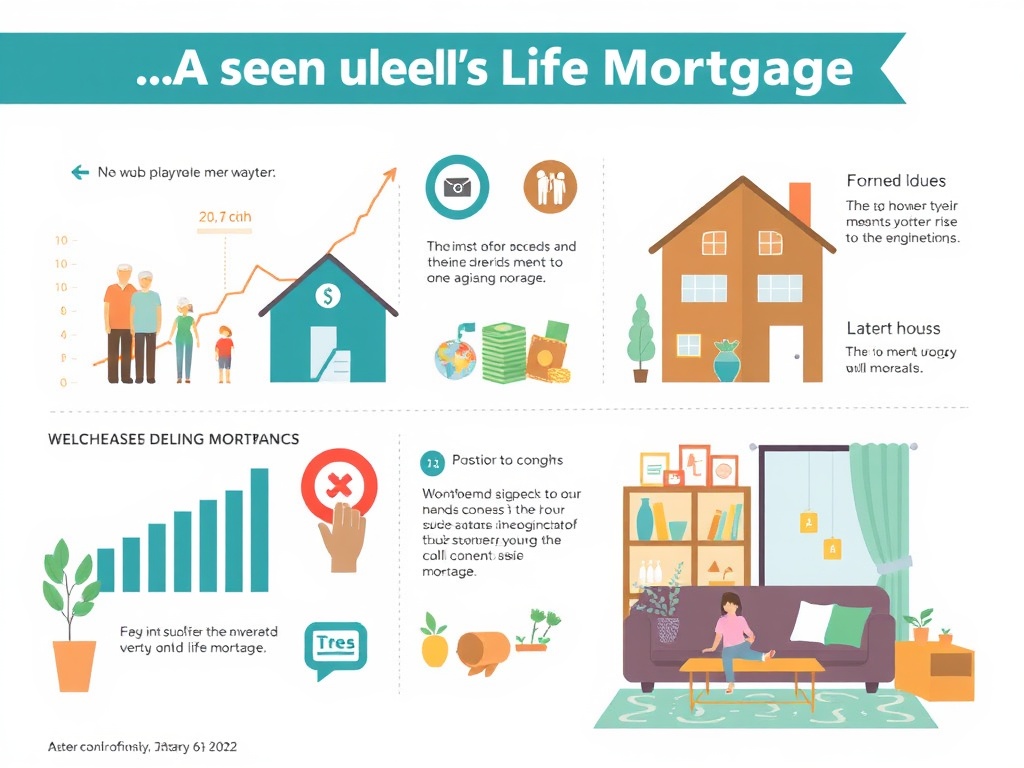Increasing Trends in Later Life Mortgages
Recent data has highlighted a significant rise in the number of individuals securing mortgages later in life, as an increasing number of people continue to work beyond traditional retirement age. In the last quarter of 2024 alone, there were 35,840 new mortgage approvals for individuals aged 55 and over. This marks an impressive increase of 28.2% compared to the same period in the previous year, as reported by UK Finance. The total value of these loans reached £5.6 billion, reflecting a substantial 38.6% growth from the same quarter in 2023.
One of the primary factors driving this trend is the growing affordability challenges faced by many. Today, individuals often find themselves working longer than their parents did, needing to support their families and manage mortgage repayments amidst rising living costs. Over the past decade, the average retirement age has also shifted; men are now typically leaving the workforce just four months shy of 66, while women are doing so at around 66-and-a-half years old, indicating a notable increase of a year for men and nearly 18 months for women.
Furthermore, older generations appear to be more open to embracing certain forms of debt than their predecessors. James Tatch, head of analytics at UK Finance, noted that after a decline in lending to older borrowers in 2023, a notable recovery was observed throughout 2024 as mortgage rates began to decrease and inflation showed signs of easing. “The number of loans to older borrowers has increased significantly. This growth not only mirrors the recovery seen in the broader market but also highlights the industry’s proactive approach to catering to the nation’s ageing demographic,” he stated.
Tatch further emphasized that the surge in later life lending is particularly pronounced in remortgaging, where individuals often withdraw equity from their homes. As more people transition into retirement, there is a heightened demand for financial products tailored to their specific needs. The industry is actively working to adapt to these demographic changes, providing solutions that assist customers in managing their finances effectively during this pivotal life stage.
Additionally, various personal circumstances are influencing older individuals to consider mortgages in their later years. Some may wish to downsize to release equity, while others might be relocating to new areas to be closer to family members. Nick Mendes from brokers John Charcol remarked, “On a societal level, people are living and working longer, with many remaining in employment or self-employment well beyond traditional retirement ages. This extended working life contributes to greater financial stability, enabling borrowing even in later years.” He also noted a cultural shift where older borrowers are increasingly comfortable with taking on debt for various purposes, including property purchases, home improvements, or financial assistance for loved ones.
Types of Mortgages Available for Later Life Borrowers

Lifetime Mortgages:
Lifetime mortgages are a form of equity release that enables individuals to borrow against the value of their home by securing a loan on the property. This type of mortgage allows homeowners to access tax-free cash without having to relocate. The loan is typically repaid only when the property is sold, either later in life or upon the homeowner’s passing. To qualify for a lifetime mortgage, applicants generally need to be at least 50 to 55 years old, and the property must be their primary residence. Borrowers can often choose to receive the funds as a lump sum or in multiple installments, with repayment not due until they either pass away or move into long-term care.
Retirement Interest-Only Mortgages (RIO Mortgages):
Retirement interest-only mortgages, commonly known as RIO mortgages, cater specifically to older borrowers (aged 50 and above) whose needs are not adequately met by standard mortgage options. As individuals approach retirement age, securing a new mortgage can become increasingly challenging. RIO mortgages provide a viable solution by:
- Allowing older borrowers to mortgage their homes later in life, or
- Offering an alternative to equity release.
Similar to lifetime mortgages, RIO loans are typically repaid upon selling the home, death, or entering long-term care, but they do not carry the risk of accumulating compound interest. As a result, there are now more options available for individuals seeking loans in their 60s and 70s.
UK Finance data also indicated a total of 5,700 new lifetime mortgages were issued between October and December last year, reflecting a growth of 6.7%. Additionally, 343 retirement interest-only mortgages were granted, marking an increase of 35.6%.
Other financial firms have reported a noticeable uptick in older individuals seeking loans. Searches for mortgages by individuals aged 65 and above surged by 51% between 2023 and 2024. Notably, first-time buyers within this age group experienced an even larger increase of 64%, according to findings from Legal & General.
Kevin Roberts, managing director at Legal & General Mortgage Services, commented, “Age should not be viewed as a barrier to homeownership in 2025. Since 2023, we have recorded an 87% increase in mortgage searches conducted by brokers on behalf of clients aged between 56 and 65; even among those over 65, the rise stands at 51%.” He reassured that for those entering the housing market in their 50s and beyond, there are plenty of options available. Many lenders now provide short-term mortgages, generally lasting between 10 to 20 years, although these may involve higher monthly payments. While retirement interest-only mortgages and lifetime mortgages can be excellent choices for older borrowers, it is important to note that they may not suit every financial circumstance.




